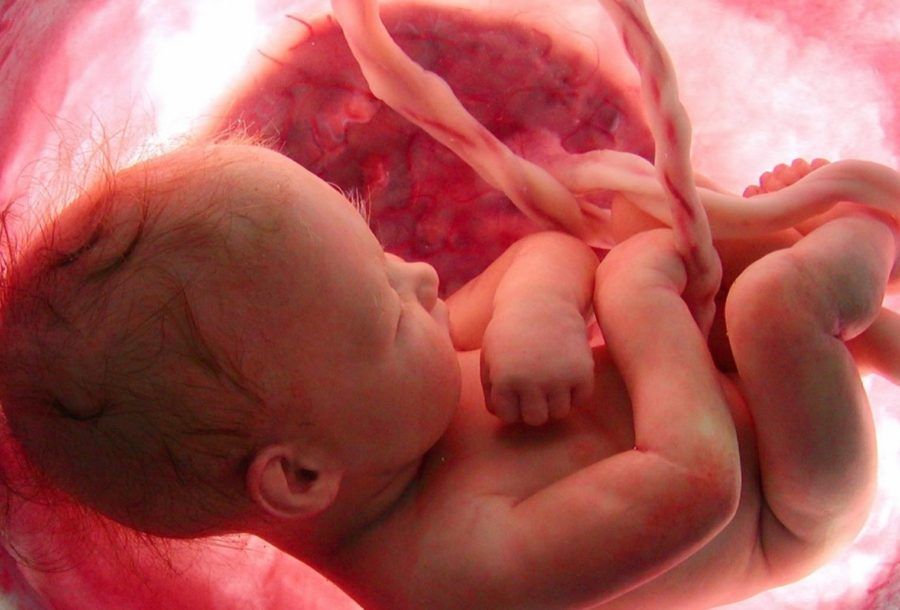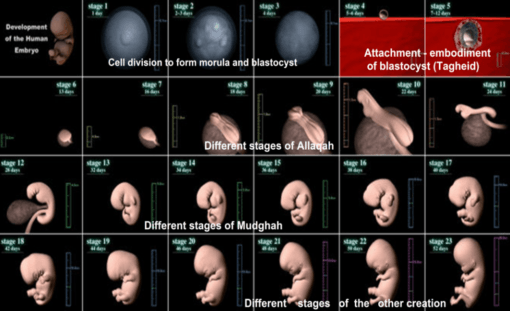
Science in the Glorious Quran: HUMAN EMBRYOLOGY
The Qur’an revealed more than 14 centuries ago mentions in a number of verses precise information about the human embryo and its developmental stages as signs of the divine power of God. Therefore, the question automatically raised is: Was the science of embryology known at the time of the Prophet Muhammad, in his society or neighbor societies? Actually, not and though the Bible was claimed to be the source of Qur’an compares embryo formation with cheese making.
“Did you not pour me out like milk and curdle me like cheese, clothe me with skin and flesh and knit me together with bones and sinews?” (Job, 10:10-11).
Strikingly, nothing was known about embryology until 1651, when Harvey, to the first time, observed the embryo of a hen using a simple lens! Later, using a light microscope, human sperms were observed, in 1677, by Hamm and Leeuwenhoek. Interestingly, it was then presumed that a sperm contains a tiny human being who can grow in the womb of the mother like a seed. On the other hand, the female ovum was not observed until 1827, when it was first observed by von Baer in the ovary of a dog.
In 1839, Schleiden and Schwann realised that the human being is formed from living ‘cells’. Although the idea of the union of a male sperm and a female ovum was later concluded by scientists, little was known about the stages of growth of human embryos until the twentieth century.
From where then did the Prophet Muhammad, who lived in an illiterate society, in the seventh century, get a precise description of the human embryo and its developmental stages, unless it was revealed to him from God? This question was the reason for Keith Moore the professor of anatomy, at the University of Toronto, Ontario, Canada to write about embryology in the Qur’an.
“وَلَقَدْ خَلَقْنَا الْإِنسَانَ مِن سُلَالَةٍ مِّن طِينٍ .ثُمَّ جَعَلْنَاهُ نُطْفَةً فِي قَرَارٍ مَّكِينٍ .ثُمَّ خَلَقْنَا النُّطْفَةَ عَلَقَةً فَخَلَقْنَا الْعَلَقَةَ مُضْغَةً فَخَلَقْنَا الْمُضْغَةَ عِظَامًا فَكَسَوْنَا الْعِظَامَ لَحْمًا ثُمَّ أَنشَأْنَاهُ خَلْقًا آخَرَ ۚ فَتَبَارَكَ اللَّهُ أَحْسَنُ الْخَالِقِينَ” (المؤمنون:12-14).
“And indeed, We created Man (Adam) out of clay. Thereafter, We made him (his offspring) as Nutfah (mixed drops of male and female sexual discharges) and lodged it in a safe lodging (the womb of a woman). We then made the Nutfah into Alaqah (leech-like structure, suspended thing, and blood clot) and then We changed the Alaqah into Mudghah (chewed-like a lump), and then We made out of the Mudghah bones, then we clothed the bones with flesh (muscles). Then We developed out of it another creation. So blessed be God, the best to create” (Qur’an, 23:12-14).
“وَقَدْ خَلَقَكُمْ أَطْوَارًا” (نوح:14).
“He created you in stages” (Qur’an, 71:14).

Human embryo development according to Carnegie Stages and the Quranic terminology

